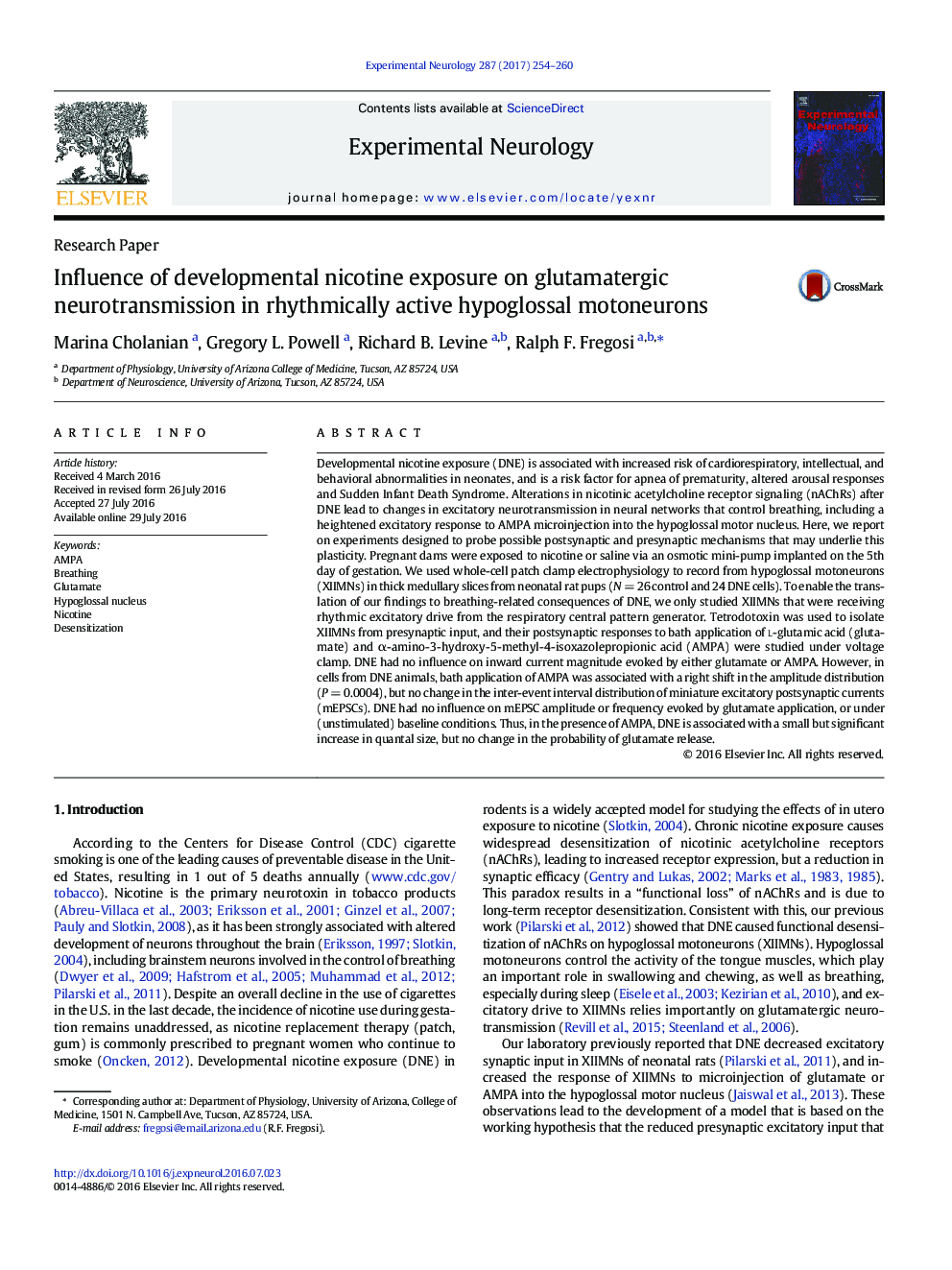| کد مقاله | کد نشریه | سال انتشار | مقاله انگلیسی | نسخه تمام متن |
|---|---|---|---|---|
| 5629226 | 1406405 | 2017 | 7 صفحه PDF | دانلود رایگان |
Developmental nicotine exposure (DNE) is associated with increased risk of cardiorespiratory, intellectual, and behavioral abnormalities in neonates, and is a risk factor for apnea of prematurity, altered arousal responses and Sudden Infant Death Syndrome. Alterations in nicotinic acetylcholine receptor signaling (nAChRs) after DNE lead to changes in excitatory neurotransmission in neural networks that control breathing, including a heightened excitatory response to AMPA microinjection into the hypoglossal motor nucleus. Here, we report on experiments designed to probe possible postsynaptic and presynaptic mechanisms that may underlie this plasticity. Pregnant dams were exposed to nicotine or saline via an osmotic mini-pump implanted on the 5th day of gestation. We used whole-cell patch clamp electrophysiology to record from hypoglossal motoneurons (XIIMNs) in thick medullary slices from neonatal rat pups (N = 26 control and 24 DNE cells). To enable the translation of our findings to breathing-related consequences of DNE, we only studied XIIMNs that were receiving rhythmic excitatory drive from the respiratory central pattern generator. Tetrodotoxin was used to isolate XIIMNs from presynaptic input, and their postsynaptic responses to bath application of l-glutamic acid (glutamate) and α-amino-3-hydroxy-5-methyl-4-isoxazolepropionic acid (AMPA) were studied under voltage clamp. DNE had no influence on inward current magnitude evoked by either glutamate or AMPA. However, in cells from DNE animals, bath application of AMPA was associated with a right shift in the amplitude distribution (P = 0.0004), but no change in the inter-event interval distribution of miniature excitatory postsynaptic currents (mEPSCs). DNE had no influence on mEPSC amplitude or frequency evoked by glutamate application, or under (unstimulated) baseline conditions. Thus, in the presence of AMPA, DNE is associated with a small but significant increase in quantal size, but no change in the probability of glutamate release.
Journal: Experimental Neurology - Volume 287, Part 2, January 2017, Pages 254-260
